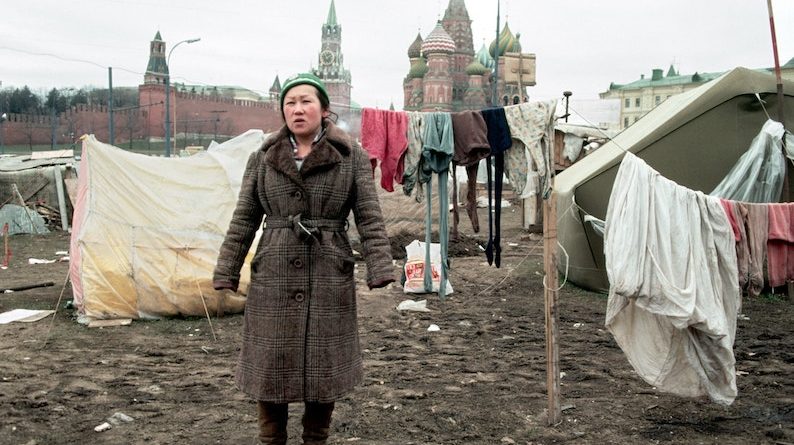What Was the Last Time an Economy Froze Like This?
By Chris Miller, Assistant Professor of International History at The Fletcher School of Law and Diplomacy at Tufts University
Businesses shuttered. Millions of workers laid off. Trade disrupted. Supply chains cut. The lockdowns imposed to slow the spread of the coronavirus are slamming the brakes on the global economy. China, the first country hit by Covid-19, is only beginning to re-emerge from its shutdown. The United States and Europe have weeks to go before a return to normalcy — weeks in which the costs of the coronavirus response will pile up.
This is no normal recession, caused by a turning of the business cycle or a financial panic. Before the lockdowns, most economic indicators looked rather rosy. Had China succeeded in stopping the virus from spreading beyond its borders, Wuhan may have sneezed, but the global economy would not have caught such a deadly cold.
If this isn’t a normal economic crisis, what is it? It is a war, say many politicians and commentators, a struggle not against a rival state but a rival species. Yet martial metaphors make little sense in explaining the economics. During wars, countries mobilize their economies to produce more military supplies. Today, we are shutting down our economy so that it produces drastically less.
How much less? The U.S. economy will produce 34 percent fewer goods and services from April to June than it did in the comparable period of 2019, Goldman Sachs estimates. This is a nose-dive in economic activity that makes the Great Depression seem mild, though we hope that it won’t last as long.
There are few precedents for this type of deep freeze. Blizzards can cause comparable drops in production, but their effect lasts for days, not months. Epidemics like the 1918-1919 flu led to quarantines, but nothing so expansive as we are seeing now.
But maybe there is a useful example of an economy that froze so quickly: In 1990, the Soviet Union had one of the world’s largest economies. It was inefficient and poorly run, but analysts at home and abroad generally thought it was stable. The Communist Party was the glue holding together the economy and the 15 republics that constituted the union.
But by 1990, the party caught an infection, a crisis of legitimacy that reached epidemic proportions. Its influence waned, powerful regional leaders questioned its authority, and its control over the Soviet economy disappeared almost overnight. Soon anti-Communist leaders took power.
This had the effect of a hurricane slamming into the Soviet economy — and then hovering over the country for a decade. In the absence of Communist Party diktats, industry had no instructions to follow. Steel mills stopped supplying car factories, so auto production plummeted. With no consumer goods on the shelves, consumption of everything but basic foodstuffs ground to a halt.
The Soviet Union fell apart, with 15 countries springing up where there had previously been one. Leaders of these newly independent countries threw up trade barriers. Labor flows and transport links were disrupted. The unified Soviet ruble was split into 15 different currencies. A “globalized” socialist economy split into pieces.
There are many differences between the Soviet Union’s dissolution and our own coronavirus-induced freeze. But there are obvious similarities, too. Trade links have been torn apart by the economic downturn. Transport has been obstructed by the cancellation of flights and shipping. Companies such as Apple, which has been a leader in establishing cross-border supply chains, are rethinking reliance on manufacturing in China.
If companies don’t change their globalized way of doing business, governments may force them to. Many countries are limiting exports of masks and other medical supplies. Sometime in the next year or so, the world will likely acquire its first vaccine against the virus. It is easy to imagine whatever country that creates the vaccine prohibiting exports until its citizens have been vaccinated first.
Indeed, President Trump is not the only person questioning the wisdom of international trade. Ideas about national self-sufficiency championed by his advisers, like the trade skeptic Peter Navarro, are beginning to look more mainstream. The European Union has seen debates about whether medical goods can be exported beyond the bloc — or even to other countries within it. China hypes its supplying of medical equipment to countries in need, but it kicked off the trend of hoarding masks. Almost everywhere that the coronavirus has spread, it has brought not only lockdowns, but trade restrictions, too.
When the Soviet Union’s economy splintered, catastrophe resulted. As businesses closed and workers lost jobs, the Russian economy shrank by 14 percent in 1992 — a staggering decline that the United States and Europe may well replicate this year. (By comparison, in 2008, in the depths of the financial crisis, America’s G.D.P. declined by only 3 percent.) For Soviet citizens, the human costs of the crash were severe, with life expectancy falling so fast that it appeared that a new disease was ravaging the population.
Today, we have no alternative to lockdowns if we want to survive. Still, countries like Russia that experienced double-digit declines in G.D.P. have found that the results weren’t healthy. Terrible recessions come with human costs. In the United States, 6.6 million people filed for unemployment claims in just one week. Throwing up barriers to trade and to business is tough medicine — not a cure all.
This piece is republished from The New York Times.

